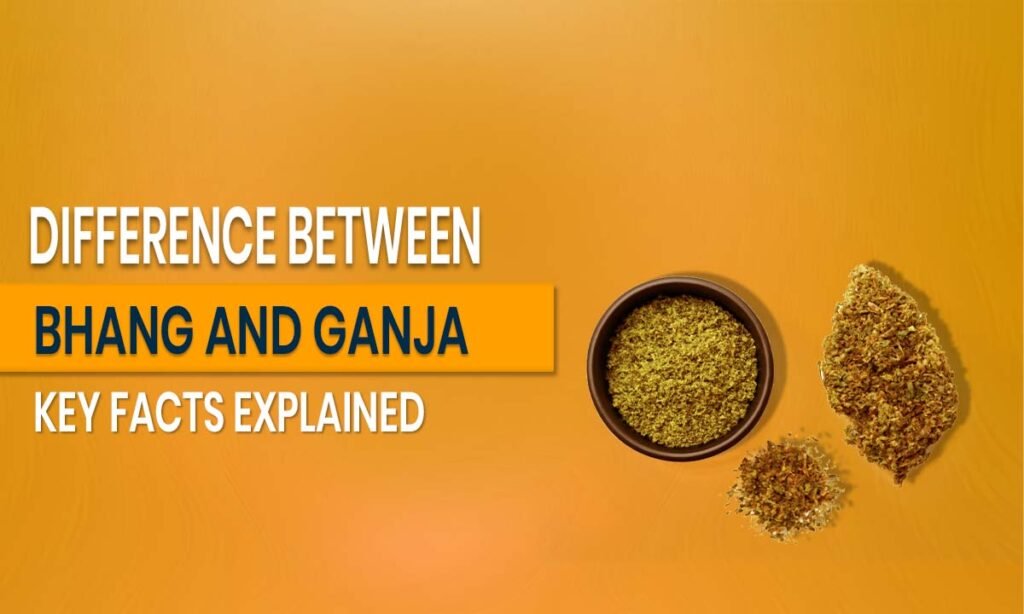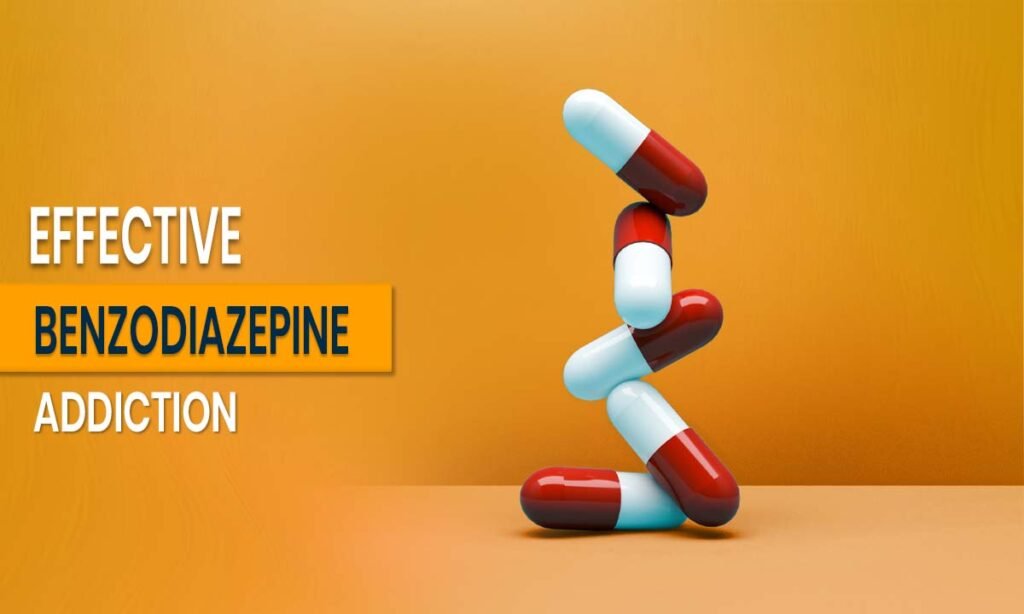
When it comes to cannabis, there are a variety of terms used around the world that can sometimes be confusing. Two such terms are “bhang” and “ganja.” These terms are not just linguistic nuances but represent distinct parts of the cannabis culture and plant itself. It is important to understand the difference between them. This is especially true if you are looking into the cultural, legal, or health aspects of cannabis use. Whether you are new to cannabis or want to learn more, this article will help. It will explain what ganja is, the difference between bhang and ganja, and their effects and side effects.
What is Ganja?
Ganja is a term commonly used to refer to the flowering tops or buds of the cannabis plant. Ganja is known for having a lot of cannabinoids, especially THC (tetrahydrocannabinol). It is the part of the plant linked to the famous psychoactive effects of cannabis. The high THC content mainly sets ganja apart from other cannabis products. This makes it a popular choice for recreational users looking for a strong experience. Ganja is often smoked or vaporized. Many fans praise its strong effects, which quickly bring feelings of happiness and relaxation.
Ganja Effects
The effects of ganja can vary significantly depending on the strain, mode of consumption, and individual tolerance levels. However, some common effects include
- Euphoria: Users often report a heightened sense of happiness and an overall feeling of well-being. This is one of the most sought-after effects, providing a temporary escape from stress and anxiety.
- Relaxation: Ganja can calm both the body and mind. This makes it popular for relaxing after a long day. This relaxation can help with sleep and stress relief.
- Altered Perception: Users might notice changes in how they sense things. They may see colors more vividly or enjoy music and art more. This altered state can lead to creative insights and a different perspective on everyday experiences.
- Increased Appetite: Often referred to as “the munchies,” this effect can be beneficial for those with appetite issues. It is also a well-known side effect that has become a cultural reference in many societies.
Ganja Drug Considerations
It’s important to remember that ganja is often used for fun and medicine, but it is still a drug. This means it carries the potential for abuse and dependency, especially when used excessively. Using it regularly can lead to tolerance. This means users need to take more to feel the same effects. It can also cause physical and mental dependence. The legal status of ganja is different around the world. Some places have strict penalties for its use. Others have legalized it with certain rules. Users should be mindful of both legal implications and health considerations when choosing to use ganja.
For individuals struggling with drug addiction treatment, it’s essential to seek professional help. The journey toward recovery can be supported by various treatments, including therapies and medical detoxification. To explore available Alcohol Detox Treatment options, it is crucial to consult with healthcare providers who specialize in addiction.
What is Bhang?
Bhang, on the other hand, is a traditional Indian preparation made from the leaves and seeds of the cannabis plant. Unlike ganja, which uses the potent buds, bhang typically has a lower concentration of THC. This lower potency makes bhang more suitable for social and ritualistic consumption, often integrated into cultural and religious celebrations. It is often eaten and mixed with food or drinks. This is especially true during lively festivals like Holi, where it is part of traditional customs.
Bhang Preparation and Use
To prepare bhang, you grind the leaves and seeds into a paste. Then, mix this paste with different ingredients to make a drink or a sweet treat. You can mix this paste with milk, spices, and sugar to make a refreshing drink. It can also be used in sweets. Bhang is important in Indian culture. People have used it for centuries in social and ritual settings. During festivals, bhang is often shared among friends and family, symbolizing unity and celebration. Its use in religious rituals shows its importance beyond just fun. People sometimes believe it helps them connect better with the divine.
Difference Between Bhang and Ganja
The main difference between bhang and ganja is the part of the cannabis plant used. They also differ in strength. While ganja utilizes the buds with high THC content, bhang uses the leaves and seeds, resulting in a milder effect. This distinction is not just about potency but also about the cultural contexts in which each is used.
For those interested in exploring the side effects of bhang, it’s crucial to understand that while it is typically milder than ganja, it can still lead to unwanted side effects if consumed excessively. These effects may include dizziness, dry mouth, and impaired coordination, particularly in inexperienced users.
Potency and Effects
- Ganja: Due to its higher concentration of THC found in the buds, ganja leads to stronger psychoactive effects. These effects are often immediate and intense, making ganja a popular choice for those seeking a powerful experience.
- Bhang has lower potency. It gives milder effects that are linked to a more relaxed and social experience. This makes it easier for more people to enjoy. This includes those new to cannabis or who want a milder experience.
Cultural and Legal Aspects
- Ganja is used for both fun and medicine. However, its legality changes a lot from one country or region to another. In some places, it is strictly prohibited, while in others, it is regulated or even fully legalized. Understanding these legal nuances is crucial for any user.
- Bhang: In contrast, bhang holds cultural and religious significance in India, where it is legally consumed during specific festivals. Its consumption is often seen as a sacred tradition, deeply embedded in cultural practices and spiritual beliefs.
Ganja Side Effects
Like any substance, ganja can have side effects, especially with excessive use. Some common side effects include:
- Dry Mouth: A common sensation of thirst and dry mouth, often leading users to drink more water. This is a relatively minor side effect but can be uncomfortable.
- Red Eyes: Bloodshot eyes are often a giveaway of cannabis use, resulting from the dilation of blood vessels. This effect is temporary and generally harmless.
- Impaired Memory: Short-term memory can be affected during use, making it difficult to concentrate or remember details. This can impact daily activities and productivity.
- Anxiety: In some cases, particularly with high doses, ganja can lead to feelings of anxiety or paranoia. Users should be cautious with dosage to avoid these adverse effects.
Responsible Use
To minimize side effects, it’s important to use ganja responsibly. This means starting with low doses, especially for beginners, to gauge individual tolerance levels. Avoiding mixing with other substances like alcohol can prevent unwanted interactions and potential health risks. Users should pay attention to where they use ganja. It should be a safe and comfortable place to improve the experience.
Conclusion
Understanding the difference between bhang and ganja is crucial for making informed choices about cannabis use. While both come from the same plant, their preparations, potencies, and cultural significance set them apart. Whether you are learning about ganja or the traditions of bhang, being informed helps you have a safe and fun experience.
At Athena Luxus, a luxury rehab center in Delhi, we prioritize educating our clients about responsible cannabis use. Our team is here to guide you on how to make choices that align with your well-being, ensuring that every aspect of your experience is informed and respectful.
Always know the legal status of cannabis products where you live. If you have any concerns, talk to a healthcare professional. By using cannabis responsibly and being aware, you can explore its many uses and respect its cultural backgrounds.
Patient Experiences:
Ravi Kumar,
Athena Luxus’s guidance helped me understand the differences between bhang and ganja. A truly enlightening experience!
Suman Patel,
I learned so much about cannabis. Athena Luxus provided excellent insights into its cultural and medicinal uses.
Anita Verma,
Thanks to Athena Luxus, I can now differentiate between bhang and ganja and understand their effects clearly.
Rajesh Yadav,
The information provided by Athena Luxus was exactly what I needed to learn about the effects of ganja and bhang.
Frequently Asked Questions (FAQs)
What is the main difference between Bhang and Ganja?
Bhang uses cannabis leaves and seeds, while ganja uses the buds, leading to different potency levels.
How does Ganja affect the body?
Ganja can cause euphoria, relaxation, altered perceptions, and increased appetite, but also has potential side effects like anxiety.
Can Bhang be consumed daily?
Bhang is consumed during festivals or rituals, but regular use isn’t recommended due to its mild psychoactive effects.
Is Ganja legal everywhere?
No, ganja’s legality varies by region. It’s illegal in some areas and legal with restrictions in others.
Can Bhang be used in religious rituals?
Yes, bhang has cultural and religious significance, especially in India, where it is consumed during festivals like Holi.

